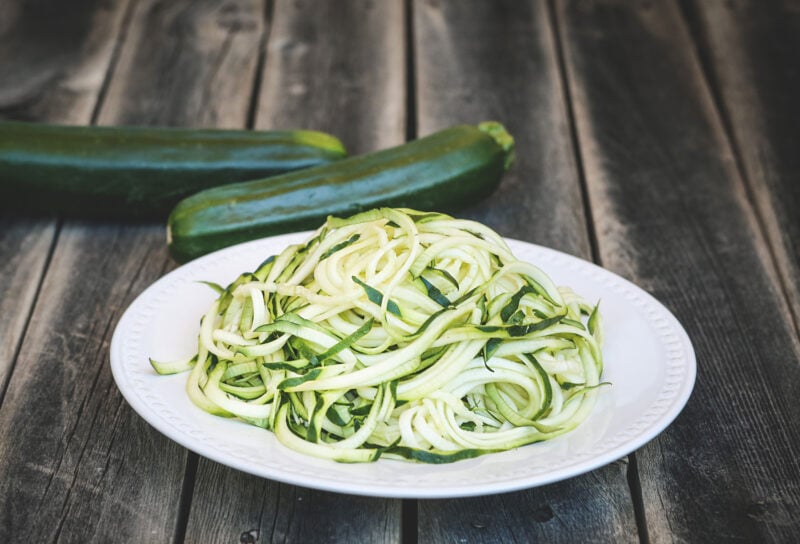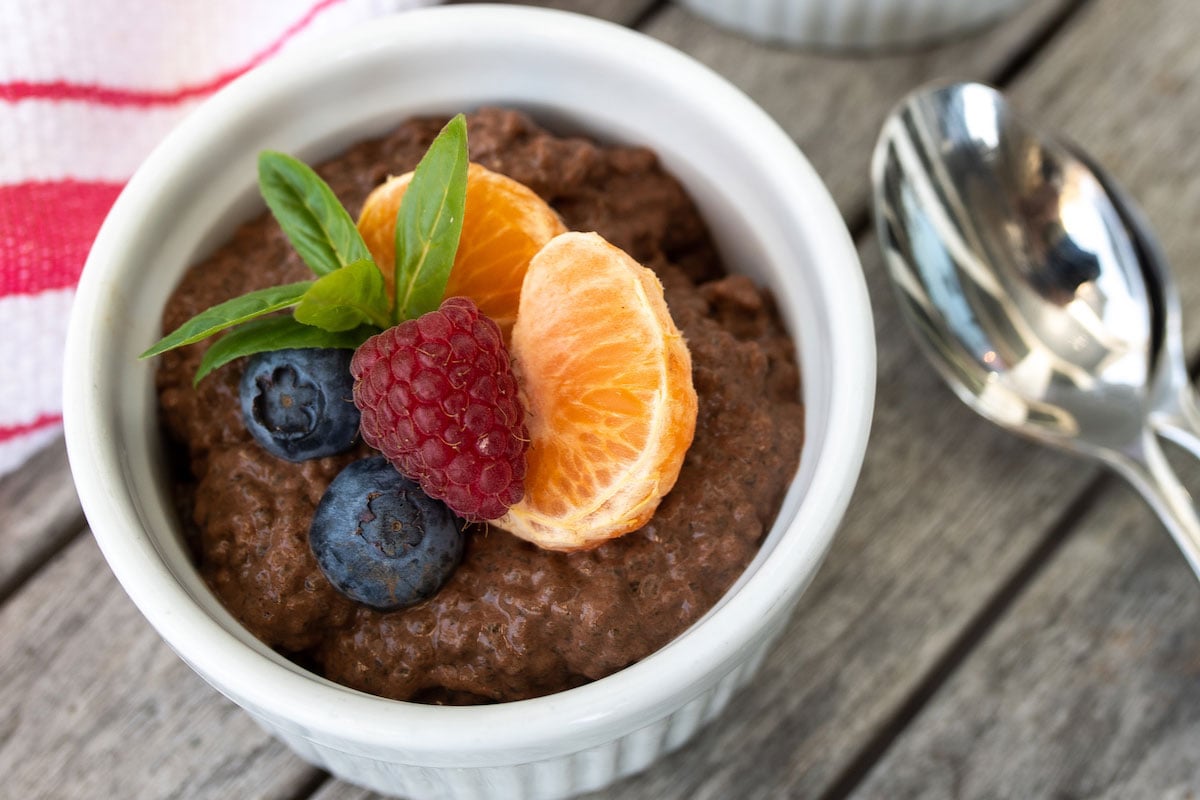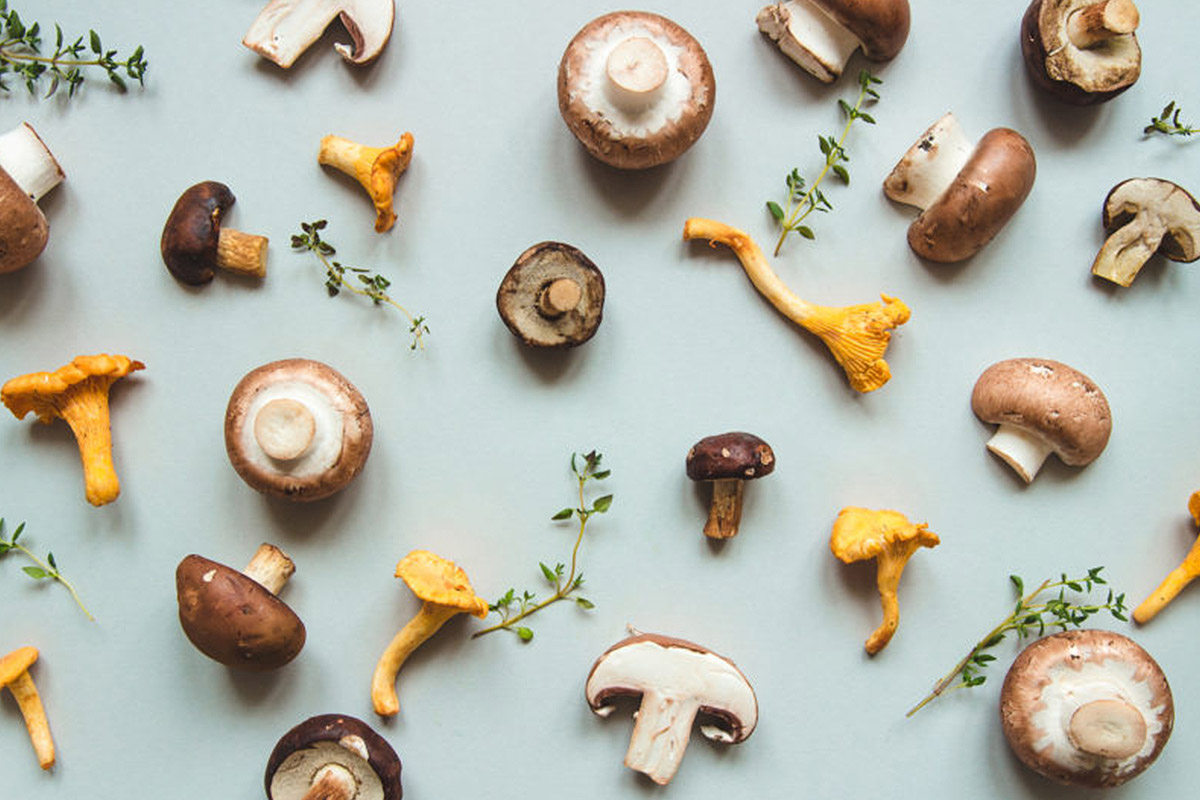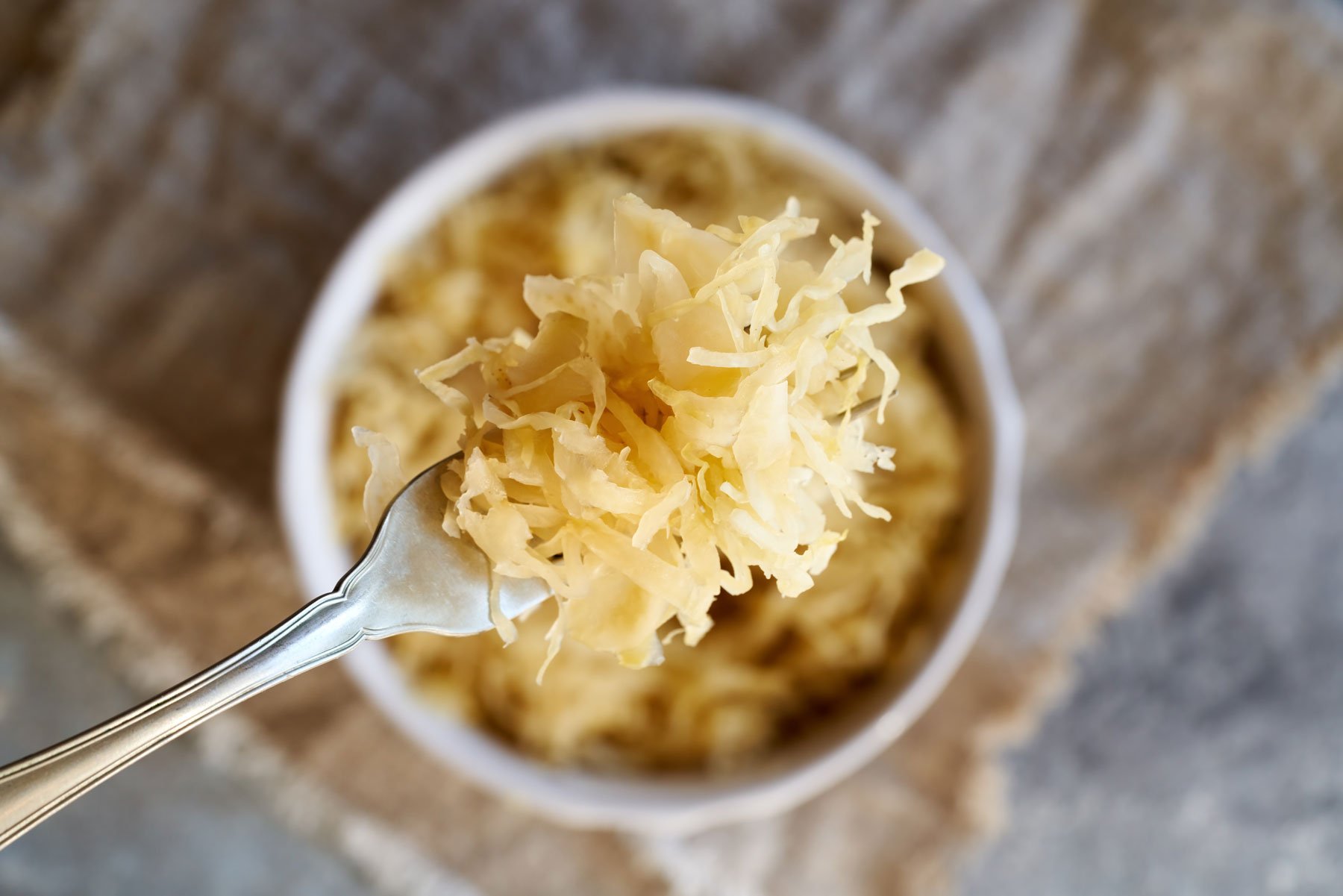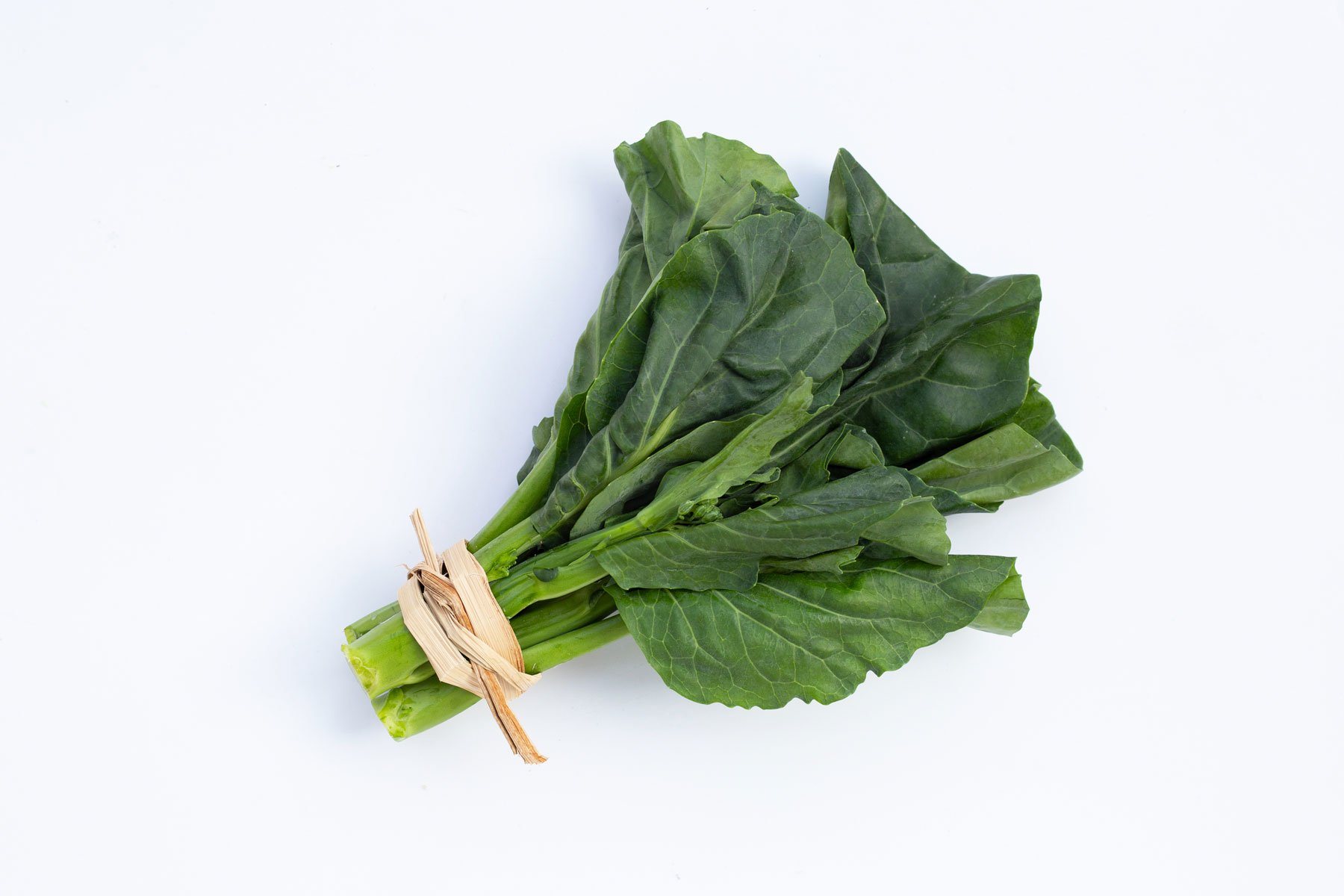You know it’s really summer when every friend with a garden tries to pawn off the fruits of their prolific zucchini plant on you. And that’s not a bad thing.
Zucchini is a type of summer squash that’s green and has a long, cylindrical shape. Technically a fruit, it’s more commonly categorized as a vegetable.
One great thing about zucchini: You can eat lots of it for minimal calories and carbs. One cup of chopped zucchini contains 21 calories and 3.9 grams of carbohydrates, making it unlikely to spike blood sugar. It also provides fiber and a decent portion of the adult recommended dietary allowance (RDA) for several vitamins and minerals, including vitamin C (25-30% RDA), vitamin B6 (16% RDA), manganese (9.5-12% RDA), riboflavin (9-10.5% RDA), and potassium (9.5-12.5% RDA). And zucchini is a source of the carotenoid antioxidants lutein and zeaxanthin.
This combination of nutrients and zucchini’s ability to stand-in for carb-rich food make it a smart addition to any metabolically friendly diet.
Zucchini’s Metabolic Punch
The most impactful way you can use zucchini to support metabolic health is by eating it in place of high-carbohydrate foods such as pasta. Zucchini is easily spiralized or peeled into zucchini noodles (a.k.a. “zoodles”), which can be used in place of pasta or noodles, while delivering a fraction of the carbohydrates. Zoodles work well lightly sauteed (just enough to heat, about 2-3 minutes) and added to soups that will be eaten immediately or dressed up with any sauce or toppings that aren’t watery such as a thick meat sauce, pesto, alfredo sauce (like this dairy-free version), or olive oil and parmesan.
You save about 67 grams of carbs when you trade a cup of cooked spaghetti pasta for a cup of zucchini noodles. Used regularly, low-carb swaps like this may improve blood sugar stability, insulin sensitivity, and other metabolic syndrome markers. Over time, this could help curb risk of metabolic disorders such as diabetes and cardiovascular disease.
Zucchini also contains a range of micronutrients and phytochemicals that are important for metabolic health. Vitamin C, manganese, lutein, and zeaxanthin all have antioxidant properties, meaning they help counteract oxidative stress—the imbalance between pro-oxidants called reactive oxygen species (ROS) and antioxidants—and its downstream consequences. This is important for metabolic health, as unchecked oxidative stress contributes to cellular damage that can, in turn, drive inflammation and increase the risk of insulin resistance and diabetes, cancer, cardiovascular disease, and overall metabolic dysfunction.
More specifically:
- Lutein has been shown to help scavenge ROS by inducing antioxidant enzymes and downregulating NF-κB, a pathway that normally turns on pro-inflammatory genes.
- Zeaxanthin scavenges ROS and boosts the body’s production of a potent antioxidant called glutathione.
- And manganese, an essential mineral, is crucial for the production of an enzyme (MnSOD) that reduces oxidative stress in mitochondria (the energy production centers of cells, where most ROS are produced), as well as enzymes involved in glucose and fat metabolism.
Vitamin B6 is another metabolically important micronutrient found in zucchini. It plays an important role in reactions that regulate glucose, fat, and protein metabolism, and higher B6 levels have been associated with reduced risk of Type 2 diabetes in epidemiological studies. Additionally, animal research suggests vitamin B6 may lower blood glucose levels and combat oxidative stress and its associated cellular damage.
Zucchini Buying Advice
Buying zucchini is pretty straightforward, but keep the following shopping tips in mind:
- Zucchini is most widely available and flavorful in summer months, when you can readily find it at farmers’ markets and roadside farm stands. It’s also available year-round in grocery stores.
- Look for zucchinis that are small to medium in size—aim for a max of six to eight inches long and two inches in diameter, since overly large zucchinis can develop a bitter flavor and unpleasant pulpy texture.
- Zucchinis should be firm, vibrant green in color, and have slightly prickly yet shiny skin that’s free of cuts and bruises.
- If possible, select zucchinis that have at least an inch of their stem still attached, which will help maintain freshness.
- For added convenience, many grocery stores sell pre-sliced or pre-spiralized zucchini. Store these in the refrigerator and use them within three to four days.
- Frozen zucchini is also available in a variety of forms, including spiralized zucchini to use as a noodle alternative, sliced zucchini for stir-fries and sides, and wide zucchini strips for grilling. Try to avoid options with sauces or additives.
Tips for Storing & Using Zucchini
- Store whole zucchini in the refrigerator in a plastic produce bag or a brown paper bag. Depending on how fresh it was when you bought it, it may last anywhere from five days to two weeks. To avoid premature spoilage, don’t wash or prep your zucchini until you are ready to use it. If your zucchini is wrinkled, slimy, or mushy, toss it.
- One of the biggest perks of zucchini is its versatility as a substitute for high-carb meals and snacks such as pastas, chips, fries, and more. Three tools can help you get the most out of your zucchini: a table-top spiralizer or a KitchenAid Stand Mixer spiralizer attachment to make spaghetti-like noodles; a Y-shaped vegetable peeler to make wider ribbon-shaped noodles; and a mandolin to make wide zucchini strips of a uniform thickness that are ideal for grilling or making zucchini lasagna.
- Salt raw zucchini before cooking to draw out excess moisture and prevent a mushy final product. For example, if you’re going to pan-fry zucchini noodles, first place your raw zoodles in a colander over the sink and sprinkle with salt, tossing to coat. After 15 minutes, blot with a paper towel to remove excess moisture and then proceed.
- Prepared zucchini noodles may not hold as much moisture, but it’s still good to blot them with a paper towel before using.
Ideas for Eating Zucchini
Zucchini is incredibly versatile. It’s tasty raw or cooked and can shape-shift into zoodles, stir-fries, soups, and more. Try these ideas:
- Sauteed zucchini: Thinly slice zucchini into rounds or half moons and saute in a skillet over medium heat along with avocado or olive oil, minced garlic, salt, and pepper. Cook until the zucchini is tender but still somewhat crisp (about five minutes).
- Zucchini stir-fry: Add other sliced veggies such as onions, carrots, and mushrooms to your sauteed zucchini. Toss with flavor boosters such as garlic, ginger, tamari, and tahini, and add chicken, steak, or shrimp for protein.
- Grilled zucchini: Thinly slice zucchini into wide strips with a sharp knife or mandolin, season with oil, herbs, and spices (or a slather of whatever marinade you’re using for your protein), then cook both sides on a hot, well-oiled grill until grill marks appear. Enjoy as a side, or turn them into zucchini roll-ups with ingredients like fresh mozzarella and sundried tomatoes.
- Zucchini lasagna: Wide zucchini strips can stand in for lasagna noodles. Simply layer your strips in a pan along with meat sauce and cheese, bake, and you’ve got low-carb zucchini lasagna.
- Zucchini noodles: Spiralize zucchini or use a vegetable peeler to create noodle-like ribbons that can be eaten raw or lightly pan-fried. Use zoodles as a base for salads, a low-carb replacement for pasta (try with thick marinara or pesto), a sub for ramen noodles, or a stand-in for wide, flat rice noodles in this zucchini noodle pad see ew.
- Zucchini boats: Stuffed zucchini, or zucchini boats, are the perfect low-carb vehicle for a variety of tasty combinations. Slice your zucchinis lengthwise, scoop out some of the flesh so fillings can rest inside, load with ingredients, then bake. You won’t even miss the tortillas in these Mexican zucchini taco boats.
- Baked zucchini fries or chips: Satisfy those salty-crunchy cravings for a fraction of the carbs of fries or potato chips. Slice zucchini into sticks or thin rounds; toss with olive oil or avocado oil; sprinkle with a combo of parmesan cheese, herbs, and spices; and bake until crispy. Pro tip: Air fryers are great for extra crispy zucchini chips.
- Healthy pizza topper: Slice zucchini ultra thin so it doesn’t turn into soggy mush when baking atop your pie. For extra flavor, briefly marinate zucchini in olive oil and herbs before layering onto your pizza and baking.
- Soup booster: Zucchini serves as a great thickener for creamy vegetable soups. This green detox soup features a variety of aromatics (garlic, onions, lemon, and parsley) and green veggies (kale, broccoli, and zucchini) that are cooked in coconut oil and then blended with vegetable broth until smooth. And this ultra creamy zucchini soup is a bit lighter on the veggies but gets its silky texture from a combo of zucchini and cashews.
